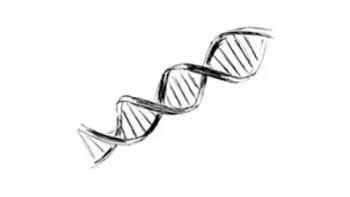
Jonathan C. Trent, MD, PhD: Standard of Care for Invasive, Unresectable Leiomyosarcoma
What is the current standard of care for patients with invasive, unresectable leiomyosarcoma?
The standard of care for patients with invasive or unresectable leiomyosarcoma involves chemotherapy, and at times, radiation therapy as well. At our practice at the University of Miami Sylvester Cancer Center, we usually treat these patients initially with an anthracycline-based regimen. Second-line therapy would be with gemcitabine, usually in combination with docetaxel. These patients may be treated in third-line therapy with either pazopanib or a new agent called trabectedin.
The goal of therapy in a patient with unresectable or invasive leiomyosarcoma is to get reduction in the tumor size, such that it may, in the future, become resectable, or hopefully curable.
CASE: Soft-Tissue Sarcoma (Part 1)
Rachel F is a 58-year-old school teacher from Roanoke, Virginia. Her medical history is notable for mild hypertension and total knee replacement in 2011
- In March of 2013, she presented to her PCP with abdominal fullness and distension of several months’ duration; physical exam showed mild abdominal discomfort on palpation; she denied any recent weight loss
- Initial abdominal sonography was inconclusive; subsequent CT scan showed a heterogeneously enhancing retroperitoneal mass along segment I of the inferior vena cava (IVC) and central necrosis
- She underwent contrast-enhanced CT with coronal and sagittal reconstructions, which showed encasement of the aorta and multiple hepatic metastases
- CT guided biopsy of the mass showed leiomyosarcoma that was immunohistochemically positive for desmin, smooth muscle actin, and vimentin, with a high proliferative rate (Ki67 > 60%)
- She underwent chemotherapy with gemcitabine and docetaxel for a total of 6 cycles, and experienced a minor response. Therapy was discontinued however, in November 2013 due to cumulative toxicity
Follow-up CT scan in January 2014 showed progression at multiple sites; at the time of follow up, her ECOG performance status was 1, with renal and hepatic function within normal limits
- She underwent six cycles of chemotherapy with anthracycline and dacarbazine, and her disease stabilized
In September of 2014 she returns for follow-up, unable to work with increasing fatigue and abdominal pain, and her CT scan was consistent with progressive disease
- She received treatment with pazopanib at 800 mg daily for metastatic disease
- Patient tolerated the treatment well, with mild fatigue and diarrhea, and her symptoms improved
After 4 months of therapy, she presents with worsening abdominal pain and declining performance status
- CT showed extensive progression of the primary tumor and hepatic metastases
- At progression, CBC, liver, and renal function were within normal limits, ECOG performance status was 2










































